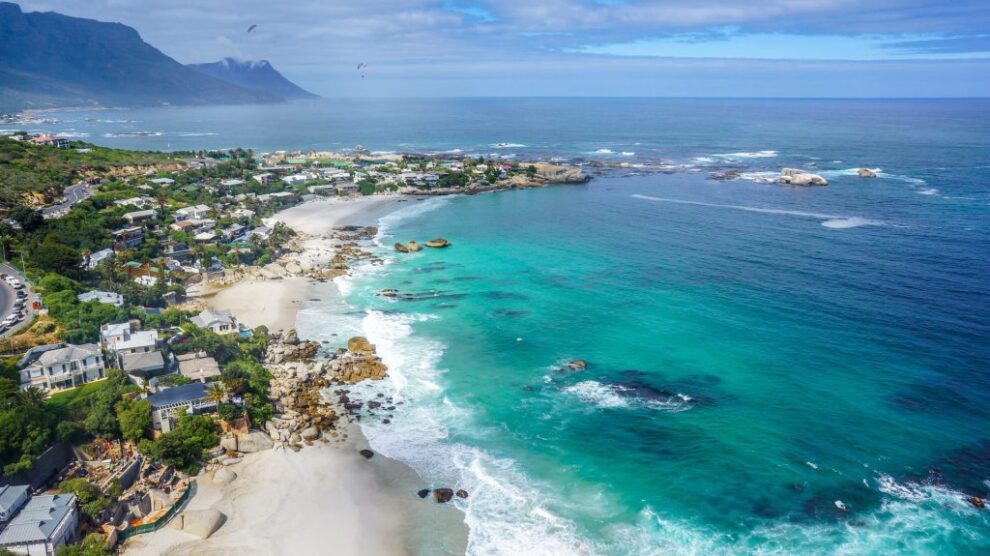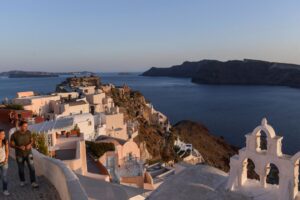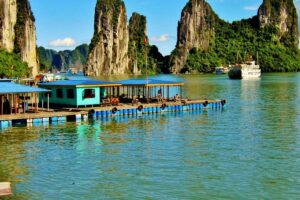The water quality at a number of Cape Town’s beaches and tidal pools –including Fish Hoek beach, Strandfontein beach, Hout Bay beach and both Camps Bay tidal pools – is poor, according to the city’s water quality review.
The beaches have been labelled in red in the review, indicating a health risk and a high bacteria count, with Central False Bay, Lagoon beach (Milnerton), Macassar to Gordon’s Bay, and Three Anchor Bay beach considered to have chronic water quality problems.
The city samples coastal waters at 99 sites twice a month across the coastlines, and the results from each area are categorised as excellent, good, sufficient or poor.



Deputy Mayor and Mayoral Committee Member for Spatial Planning and Environment, Eddie Andrews, sought to allay rising fears that the city’s coastal water quality is not as safe as previously thought, announcing: “Cape Town’s most popular beaches display excellent water quality results ahead of the festive season.
“We are thrilled to announce that the results for 147 water quality samples show excellent water quality across Cape Town’s key recreational nodes or beaches. A full 95% of water samples are well below the single sample standard of 180 enterococci per 100ml. This confirms water quality is not just good, but excellent by global standards across our popular beaches,” he said.
This was based on an independent analysis of water samples taken over the past seven weeks, the latest on 15 November 2023, Andrews said.
Yet the results as of 8 November – the latest water quality data available on the city’s water quality dashboard – show concerning water quality data at some of these beaches and tidal pools.
The city says the bad results from the review are almost always due to a localised issue at the sampling site. For example, at Camps Bay Tidal Pool A, the sampling point is next to a sewage pump station outlet, which is part of the ablution building in the middle of the tidal pool. Almost certainly, any poor result here will be caused by leaks or failures of the pump station and ablution facility, it says.
There have been calls for alternative solutions to dispose of the sewage. A study published in December 2022 found that the outfalls affected marine-protected areas in Camps Bay.
Emeritus Professor Leslie Petrik of the Department of Chemistry at the University of the Western Cape warned that the “red labelled” beaches presented a significant health risk to people.
Petrik cautioned that the results were often posted by the city long after a pollution event and said more frequent water quality testing and publishing was needed.
Dr Jo Barnes, a senior lecturer emeritus at Stellenbosch University’s Department of Global Health, said posting updated notices about water quality at beaches would damage the city’s image as a popular tourist destination, which was why its efforts at informing the public were often half-hearted.
Caroline Marx, director of NPO Rethink the Stink and environmental head of the Milnerton Central Residents Association, said: “The causes of the high pollution levels need to be resolved so that most beaches are zoned green as they were years ago. Signs don’t resolve the problem – they are also an attempt to transfer the risk from the city to the public. This is unfair, when the city is mandated to manage sewage in such a way that it does not pose a public health risk.”
Camps Bay
There has been major controversy about the water quality and Blue Flag status of Camps Bay beach. The city’s latest water quality reports classify Camps Bay tidal pools A and B as “poor”; yet, Camps Bay beach is classified as “good” despite its close proximity.
The beach was also one of eight in Cape Town that were recently awarded Blue Flag status by the Wildlife and Environment Society of South Africa (Wessa) for meeting stringent criteria related to water quality, environmental management and safety services.
Petrik said there were serious questions about the water quality at Camps Bay beach because of frequent sewage spills and other pollutants being discharged at the beach.
Read more in Daily Maverick: How safe are South Africa’s popular holiday beaches ahead of the festive season?
Barnes explained that only the top half of Camps Bay beach is classified as having good water quality, while the half closest to Maiden’s Cove is decidedly poor at times – likely as a result of its proximity to the Camps Bay marine outfall where sewage is discharged.
However, the city said that the calculations for its water quality data reports were very rigorous and just a few poor individual results could be influential in the overall categorisation of an area as poor.
A city spokesperson explained this using the Camps Bay tidal pool B data, which is taken from a sampling site inside the tidal pool alongside the southwestern wall. The complete enterococci data set (bacteria per 100ml) for this site over a five-year period — from Wednesday, 16 November 2016 to Wednesday, 24 November 2021 — shows that out of 122 data points a total of only 6–8% was considered high (exceeding 180 bacteria/100ml), and these were considered as one-off readings.

Yet these eight elevated readings influence the outcome, so the interpretation and analysis of coastal water quality data has to be done carefully. The city spokesperson said that based on 122 samples, more than 90% of the time the water quality in the tidal pool was considered excellent and posed little risk to users.
In response to these concerns, Wessa CEO Helena Atkinson and Dr Gary Koekemoer, chair of Wessa’s Algoa branch, said the Blue Flag criteria were clear: only beaches that have shown a historical sampling of 20 “excellent” results, 31 days apart, can qualify for Blue Flag status.
Deputy Mayor Andrews urged the public not to fall for “baseless misinformation about our coastal water quality, especially where these allegations are not backed up by scientific evidence, namely enterococci data from more than just one sample, over a period of time, at a specific beach”.
He added that visitors to Cape Town beaches could be confident that Coastal Water Quality guidelines were being met and monitored on an ongoing basis.
Andrews, however, did warn that Cape Town had areas where land-based pollution impacted on the shoreline more regularly and might cause more variable results. Areas where this was a problem included Diep River estuary mouth and adjacent Lagoon beach; Disa River mouth in Hout Bay; Else River mouth in Glencairn; Silvermine River mouth in Clovelly; and Gordon’s Bay River.
These issues were slowly but steadily being addressed through the City of Cape Town’s Mayoral Priority Programme, which focuses on improving inland water quality, and driving record infrastructure investment in water and sanitation services.
Marine outfalls
Petrik and Barnes, who have been raising the alarm for years, say the untreated sewage discharged from the marine outfalls at Hout Bay, Green Point and Camps Bay has a detrimental effect on the water quality in these areas, endangering marine life, human health and the tourism industry. They point out that the untreated sewage from the marine outfalls returns to bays and shorelines instead of being harmlessly dispersed at sea.
Their findings have been corroborated by kayakers and surfers who have found themselves paddling in raw sewage, with used sanitary pads and condoms floating in the water.
However, the city said that its environmental summary reports for each outfall, which were written by a team of marine experts using seven years’ worth of data, had determined that none of the three outfalls caused National Coastal Water Quality Guidelines to be exceeded at any point on the shoreline.
Regarding the impact of marine outfalls on water quality in Hout Bay, Green Point and Camps Bay, a city spokesperson said:
- Camps Bay and Glen beaches both have excellent water quality, and Camps Bay has retained Blue Flag status for more than 10 years;
- Hout Bay is affected by discharge from the Disa River, which carries high levels of pollution; and
- Green Point has multiple sources of impacts from the shoreline via stormwater drains. Three Anchor Bay is a perfect example of illegal discharges via the stormwater drain that are daily and ongoing.
ActionSA provincial chairperson Michelle Wasserman paddled out in a kayak to the Green Point outfall and took photos of the raw sewage drifting on top of the water.
“The city claimed that the outfalls safely disperse wastewater deep underwater, far from the seashore, but there is nothing safe about the pathogen- and chemical-laden untreated sewage which finds its way back to the bays and shores where residents and tourists unsuspectingly swim, surf and kayak, and where children dig in the ‘swash zones’,” she said.
Public participation
On Tuesday, 21 November, a second round of public participation concluded with members of the scientific community, activists, opposition parties and civil society objecting to the marine outfalls and the impact of discharging sewage into the ocean.
These same groups unsuccessfully challenged the Department of Forestry, Fisheries and the Environment’s decision to grant the City of Cape Town coastal water discharge permits for the outfalls in 2015.
This time, they hope their comments will be considered and that the city will not be permitted to pump sewage into the ocean before it has been treated to a tertiary level, a process that removes pathogens and chemicals that are harmful to human and marine life. DM
Source : Daily Maverick



























